Creating a homeschool curriculum that suits both the academic and self-reliance goals of a prepping family is an exciting endeavor.
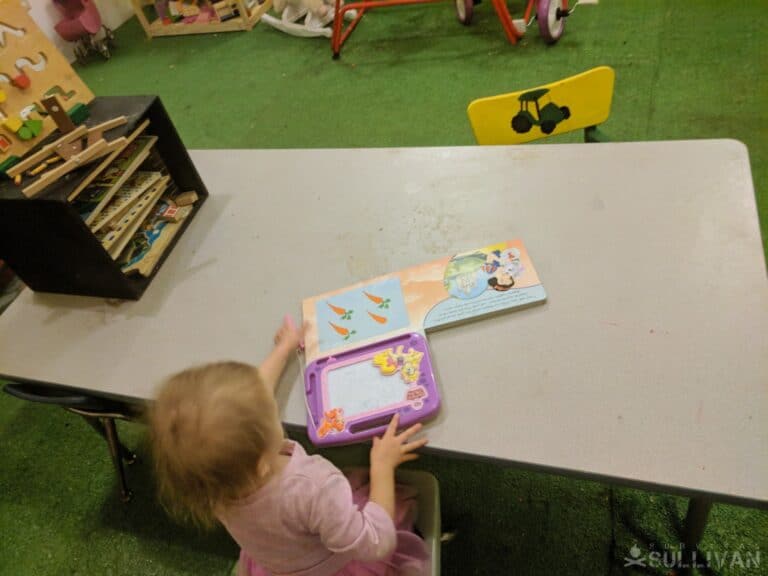
If you thought setting up the homeschool classroom was fun, the thrill of designing the curriculum is going to knock your socks off! Finally, you have control over not just what your child is being taught, but HOW they are going to learn the material.
If you do not have a background in education, setting up a curriculum and making lesson plans understandably may feel like an overwhelming and daunting task.
There are a plethora of great free or inexpensive ready make curriculum packages available online from homeschool associations and groups. You can save offline or purchase any one or combination of the learning kits, based either upon a single unit, subject in weekly, monthly, and year-long increments.
Once you have the material that covers all the state required and necessary objectives, you can tinker around with it, infusing it with out-of-the seat and hands-on training to make it your own.
Think of the ready-made curriculum packets and lesson plans as a springboard to guide your efforts and not an end point.
For the basis of this article, we are going to focus solely on how to infuse self-reliance training and skills into your curriculum and homeschool year. You just can’t find that type of material compiled by subject of grade level anywhere – at least not until I finish my Homeschool Curriculum Adventures for Survival and Homesteading Families book!
Self-Reliance Learning Adventures
Always try to incorporate multiple subjects into each learning activity. Taking advantage of this manner of teaching will reinforce and hone all of the child’s basic skills in a meaningful way.
Gardening
Teach children how to start their own seeds, grow fruits, vegetables, and herbs, create a compost pile, cultivate good soil, how to make their own natural pesticides and herbicides, and how to test its content, all reach not only nature science objectives while engaging in hands-on learning to keep them on the road to self-reliance.
The gardening lessons also require the children to comprehend and build upon their knowledge, read and follow instructions, and further their math skills all at the same time.
Have the children help make the pots for starting seeds by making their own out of newspaper and toilet paper rolls.
With your assistance, depending upon the child’s age and skills, they can make raised wood beds, and cold frames for starting seeds and plants.
Learning the basics of carpentry will add to your child’s skill set while again, teaching them how to follow directions, measure, work with angles, and understand the importance of having wood on the survival retreat and saving old materials from past projects because they could come in handy of future jobs.
Make learning the names and parts of plants the art project for the day or week. Let the children draw the plants on paper, scrap wood, or an indoor or outdoor chalkboard to learn the parts and how to spell each item you are growing in the garden.
To infuse more language, arts and science objectives into the project, have the child make a classification graph of the crops, keep a record graph of their growth, and write a daily journal entry noting what they learned that day about gardening, including hand drawn images of the plants, carpentry plans, etc.
Tying history to gardening is a little difficult, but not impossible. Use the time spent working the land together to talk about the history of American farms, Johnny Appleseed, and the progression of manual agriculture tools and equipment to modern machinery.
Discuss how the modern tools and methods used to tend to the family’s food supply would change during a disaster and how the task could be accomplished without the aide of fuel or electricity.
During story time with younger children, choose books about gardening, growing plants, and farm life. Give older children a related book, preferably a non-fiction novel about a notable off grid family that has a successful garden, people who preserve and cultivate heirloom seeds, biographies of homesteading experts, etc. Have some fun with their book reports.
Sure, the kids do need to write reports during the school year, but have them showcase their comprehension of the material by doing a book report in a bag, giving a 5-minute demonstration on something they learned from the book, making up a song or poem to describe the book, creating posters to relay the progression of the storyline in the book, or making a storybook for little siblings based upon the book they read, complete with illustrations made by hand or on the computer.
Barnyard
The educational opportunities stemming from the barnyard are nearly endless! You can do an entire learning unit on each animal that your have, or plan to have, over the course of a month – depending upon your survival homesteading plans.
Many of these activities could, and should, be going on during the same day. Learning about animal care is of course, a science lesson, but there are many, many way to infuse all four remaining primary subject areas, language arts, math, and social studies, into the same lessons as well.
Design an animal husbandry research and writing project to the age of your children. This type of learning activity is great if you work with children of multiple ages at the same time. The basis of the lesson plans and activities are the same, they are just tweaked a bit to suit each child’s age and abilities.
Instruct the children to research the key aspects of husbandry for each animal in books and online. If working with younger children, save offline some free farm animal worksheets, you will be able to find many art, math, reading, and science sheets and mini-books to get – more than what you could go through if you spend a whole month on an entire animal breed.
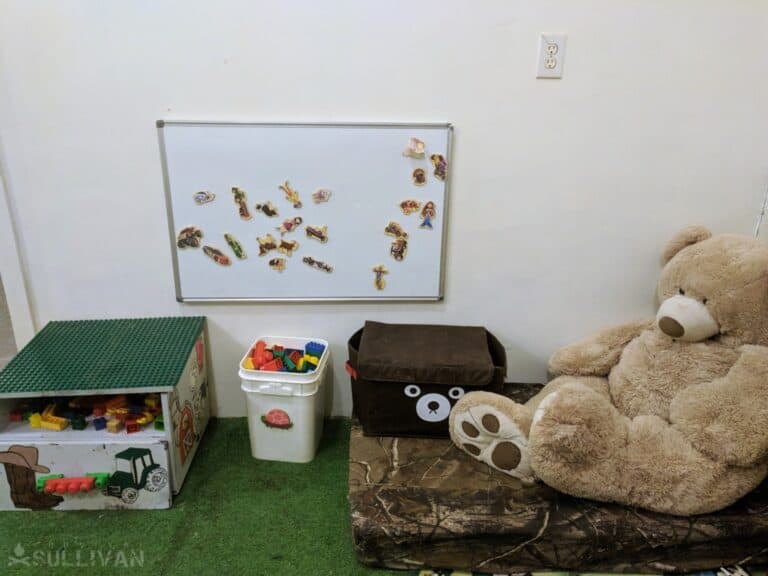
Have the children interview someone outside the family who has raised or bred the animals for a long time to give them the chance to conduct an interview with an “expert” as part of their writing lesson. Let the children take photos and videos during their interview.
Discuss what types of questions the person should be asked beforehand based upon their animal husbandry research.
Have the children keep a journal about their interaction and the behavior and health of the animal each day after doing their chores to help care for the animal.
Instruct the children to make graphs depicting how much food the animal eats, water it drinks, milks it gives, or eggs it lays each day.
This will require the child measuring out the food and water beforehand – a math skill. If the children are younger, create story problems. Based upon the animal they are learning about that week or month.
This is a great middle and high school barnyard unit activity…
Spend some time learning about what makes quality hay and straw, how much the animal eats in the different seasons and why, how to cultivate pasture to create quality hay and straw and devote a space in the homesteading survival retreat pasture to put the newly acquired knowledge to work.
To infuse some math into the lesson, give the child a budget to work from based upon a fictitious job that takes up X amount of hours.
Next, task the child with buying seed and other supplies to put in X amount of acres of hay or straw. Factor in equipment rental for baling or fuel and baling supply costs for equipment you already have.
Now, the child must factor in the time it will take to plant, harvest, and bale and the available non-work hours to get this done.
Teach the child how to use the farmer’s almanac to see long-range weather predictions to schedule the dry days needed to cut, rake, bale, and store the hay or straw.
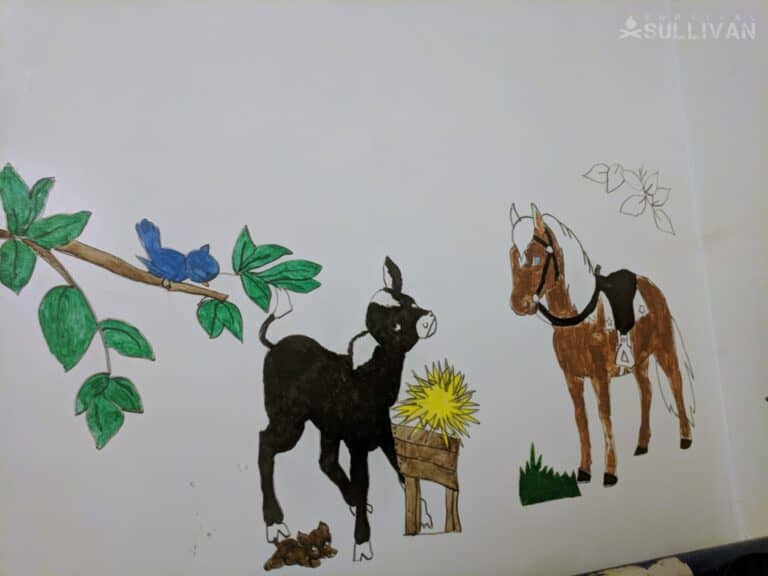
The project should be compiled as a report that shows the math work in story problem format, possibly graphs and charts, and essay question style answers to explain each step of the planting, cultivation, and harvesting process.
Food preservation, cooking, and baking with the food grown and raised on the homesteading survival retreat should be included in this unit.
The lessons offer the opportunity to teach about nutrition, math through measuring and yield activities, science via the cooking, baking, and food preservation activities, how to follow directions, and writing exercises stemming from a recipe book the children create while working on their edible projects.
The children should learn how to milk the animals on the homestead, make their own cheese and butter, as well. Put the children in charge of making a meal for the entire family out of only food grown or raised on the survival homestead.
Allow the children to work along or together to make an ad campaign promoting their barnyard “business.” They should write their own newspaper and television commercial advertisements.
Older children could even create (not necessarily publish) a blog for their business, and also create a video from their commercial advertisement writing project – complete with music or costumes they make to act out their words.
Older children should be tasked with researching and writing a report about agriculture laws in the state so they can learn how the food grown and raised on the survival homestead could legally be sold for profit.
Butchering should be introduced at the youngest age you are comfortable with, and the skills expanded upon over time.
An entire educational unit could be built around humanely slaughtering the animals, skinning them, butchering the meat, disposing of the unused portions, tanning hides, etc.
Repeat the storybook and non-fiction reading and book report activities for the barnyard unit in the same manner as noted in the gardening lesson plans section.
Help the children make simple stuffed animals depicting the animals they are learning about out of felt by using simple hand sewing stitches.
Making a diorama of the barnyard area they are learning about can be part of a larger display that grows as they learn about more animals throughout the year.
A plethora of meaningful art extension opportunities for barnyard units exist. Pinterest is a great place to look for inspiration and free patterns and art project printables.
Archery
Set up some targets and get ready to teach the children how to do a lot more than shoot! Shooting a bow and arrow will teach the children about velocity, gravity, measuring distance, angles through and aiming, just to name a few.
Help the children make a bow out of PVC pipe to use during their archery unit. The project will cost about $10 or less and requires only the use of simple tools.
The meaningful art project will require the child to follow instructions, read, and do a decent amount of math via measurement.
Make arrows with the children out of natural materials or other inexpensive items after the children research primitive arrow making and write a report about their findings.
Using construction paper, have the child draw or glue printed images, of arrows used from primitive times through today on one side and write an essay style description about each particular arrow on the other side.
Repeat this exercise when working on the PVC bow to show the different types of bows that existed both long ago and now.
This will work some history into your project. A research project about the types of bows used by Native Americans and early pioneers in your area would be a great addition to this project – visit the local historical society or similar attraction while studying about early peoples and archery.
Make targets with the children out of cardboard for their archery practice. The children should be measuring the cardboard or similar material to you exact specifications and then.
Next, have them draw or trace an animal onto each target that is a natural predator in your area. The child should write a short report about each animal or complete learning worksheets about the wild animal – or both. This will work some more science into the archery unit.
Have the child write and then give a how-to speech about how they made the bow and another about how the made the arrows and cite at least two science and historical facts during their speech – language arts, science, history, and a whole lot of fun while learning an important self-reliance skill that can help put food on the table one day.
Once the targets are drawn and painted and mounted to straw bales, the children can put their actively engage in velocity, gravity, distance, and aiming lessons and extension activities.
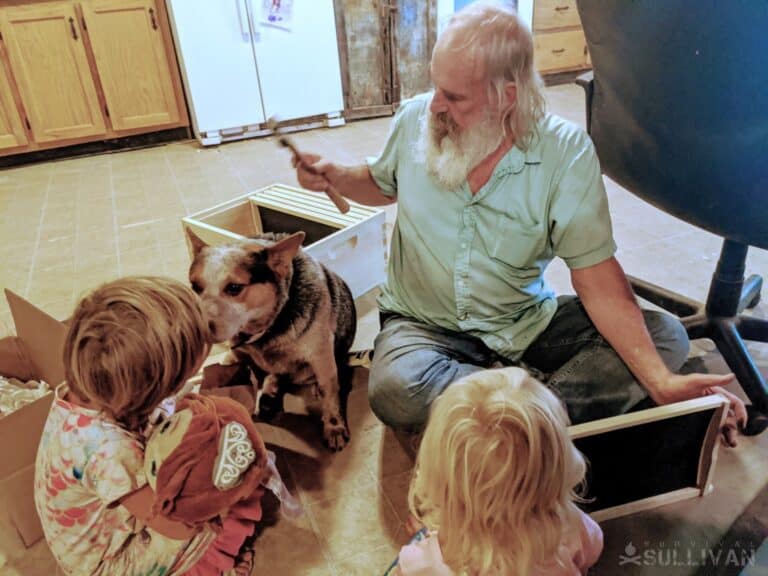
Plant Identification
Taking a field trip of sorts into the surrounding area where you live, or even out on your property if it is big enough, is a great way to get kids involved with learning how to identify edible plants along with medicinal and harmful plants.
There can be a remarkable amount of biodiversity in a relatively small area, and it is a great way to immediately get your kids tracking on the most important plants that they can make use of. And, of course, how to identify and avoid troublemakers and dangerous look-alikes.
The great thing about this learning adventure is that it is scalable as your children advance in age, maturity and knowledge: even very young children can learn to reliably identify the always-helpful dandelion and learn to steer clear of any plant that looks like poison ivy.
More mature and advanced kids can start to drill down and tell the minute difference between wild onions and its highly convincing but dangerous imposters.
There are countless other examples, besides! In any case, get your kids involved by having them start referencing and looking up known or unknown plants in guide books.
Another great way to incorporate this sort of learning is as a “module” or activity in another trip. If you’re going out camping, hiking, hunting or something else you’ll probably be surrounded by interesting plants that make for great learning opportunities.
Animal Identification and Tracking
For most kids, there is something positively magical about seeing and learning about wild animals in their natural environment, and further learning how those animals play their part in the Great Game we call life.
But when it comes to equipping your kids with survival knowledge, animals are an important resource, both in terms of food and components that can be used to make clothing, tools and more.
Much of the time it requires patience to detect the presence of wild animals, or even locate signs of their presence in an area, but this is the perfect opportunity to start teaching kids patience and basic fieldcraft in the bargain.
For young or impatient children, there are still plenty of ways to get them interested in wild animal identification.
Many animals go to and fro throughout the day with hardly a care for the presence of people unless they get too close, such as squirrels and birds.
Many wild animals have started to urbanize or live in a sort of symbiosis with human habitation such as raccoons, possums, coyotes and the like.
It’s easy to make a game out of it by having your kids identify marks or tracks left by wild animals, or having them find plants that have been nibbled on or any other sign of their activity.
Once again, this can be bundled with hunting and particularly with cleaning and butchering if the child is ready. You can make a complete day out of it by incorporating tracking and trapping or hunting skills prior to bringing the quarry home and preparing it for eating.
Even if your child isn’t quite ready for all of that, it is still important to learn about what animals are pests or even dangerous so they can be better protected against them.
Everything from deer to snakes can cause major trouble in your garden or around the farm and even threaten people directly.
No matter what, there is always more to learn about wildlife and this can prove to be a skill with a limitless return for your children and also a source of great enjoyment over the course of their life.
Shelter Construction
This is one of the most fundamental and traditional of wilderness survival skills, but one that is important for everyone.
It’s easy to think that neither you nor your children would need to construct a primitive shelter, especially if you are bugging in on a fully equipped homestead, but don’t be so hasty.
Things go wrong. Campers and hikers get stranded. Homes get destroyed. In any case, building shelters to protect you from the weather and the ever-present threat of hypothermia is critical.
Luckily, there are all kinds of shelters that can be improvised from both natural and man-made materials.
This is a learning adventure that is easy to set up even in your own backyard using nothing more than some sticks, minimal cordage with basic knots, and other materials you have lying around and it is perfect for teaching when going camping.
Another thing is that the principles of shelter and thermoregulation you teach kids during shelter construction can be similarly useful even when inside your very own home if you ever need to create a microclimate during seriously severe cold weather.
Show them how using even simple shelters in conjunction with blankets and clothing can help keep their body temperature up (and them comfortable!) even when air temps are very low.
At its most basic, you can teach children about which materials are safe and good for use as insulation, and then scale that up to the construction of increasingly effective and intricate shelter designs.
At the top of the curriculum, they can learn how to construct semi-permanent shelters that are more suitable for long-term inhabitation.
Water Collection and Treatment
Water collection and treatment is one of my favorite fundamental adventures for teaching children survival skills not only because it is so critical but also because it is so adaptable and fun to to teach
Using nothing more than plastic bottles, common cookware and improvised or purpose made water filters it is easy to show kids just how easily they can collect water from nearly any environment, and at the same time show them the risks of drinking that water before it is treated.
Watching water collected from a pond, lake, snow melt or runoff go from a murky, granulated mess to clean-ish and eventually crystal clear, safe water suitable for drinking is a powerful and simple lesson that kids will not soon forget.
This type of activity is also a great time to start getting them thinking about the bigger picture of water safety and usage.
You can do this by teaching them about the risks they should be thinking of concerning sources of contamination both above and below ground and things of that nature.
You should also take the time to teach them about concepts like gray water and black water for use around the home and homestead.
Considering water is quite literally one of the most important and precious resources on earth it is never too early to start teaching children a deep respect for it, even if it comes freely out of every tap that they have ever seen.
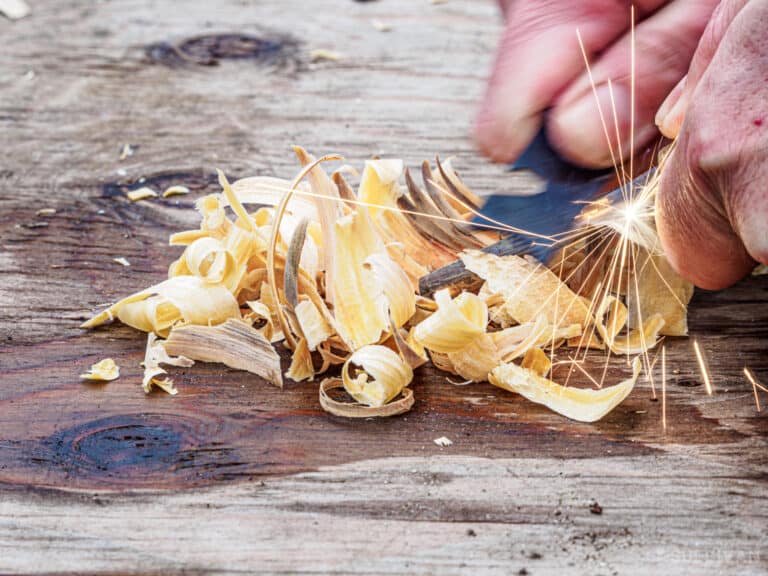
Fire Starting
Fire is one of mankind’s oldest and very best tools, and so it makes sense that your kids should know everything there is to know about it, the good and the bad.
This is another adventure that can be conducted near or away from home. In a survival situation, fire can do a lot of things for you, including providing warmth, light, the ability to cook and the ability to purify water.
This makes it arguably one of the very most important outdoor survival skills and one that remains useful around the home.
This is something that you definitely want to start small with, depending on the age and advancement of the child. Teach them how to respect fire, how to be safe around fire and how to deal with a fire that is out of control.
As they get better, teach them about the components of building and starting their own fire. How to select tinder in the form of dry grass or birch bark and how to build and start the fire using a variety of tools.
Tending a fire over the long term and fire-building for a variety of purposes is a more advanced skill: Teach them to estimate how much wood is needed to sustain a given size of fire for a given period of time and how to efficiently gather and process firewood.
In the end, you can teach them how to efficiently and quickly cook outdoors over a fire and how to make one safely in the fireplace inside your home, if you have one.
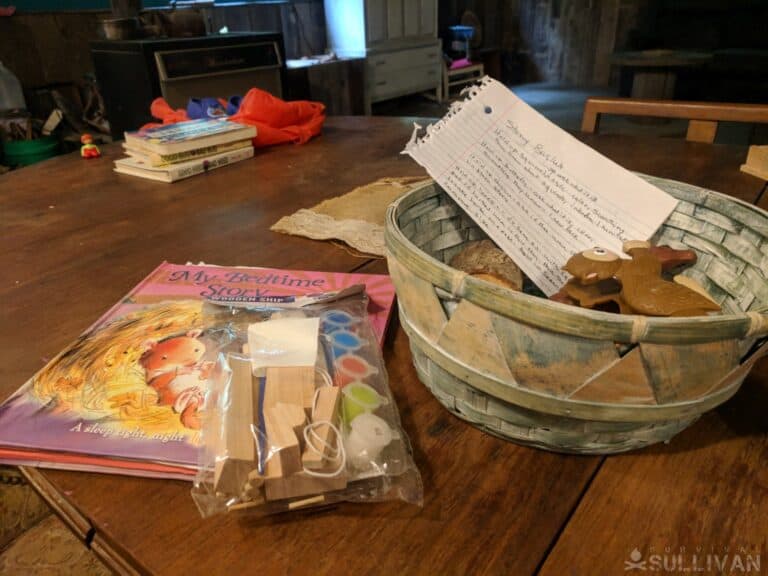
Top 20 Survival Handicraft Learning Activities
These activities can also be turned into homeschool educational units to help teach self-reliance to children of prepping parents using the same format as the examples presented above.
1. Leathercrafting
2. Making simple machines
3. Basket weaving
4. Forge building
5. Knife making
6. Knitting and crochet
7. Sewing and pattern making
8. Growing your own pharmacy to make natural remedies
9. Ammunition reloading
10. Foraging wild edibles
11. Map making
12. Tree and plant identification
13. Water purification
14. Alternative energy
15. Mechanics
16. Fire starting and open flame cooking
17. Making your own charcoal
18. Making a rainwater collection system
19. Making portable and household water purification systems
20. Outhouse building
These are just a sampling of a few of the many ways you can use self-reliance skill building activities and common homesteading chores to teach valuable life and academic lesson in your prepper retreat homeschool classroom.
The ultimate beauty of creating a homeschool curriculum is that you can adapt it to meet the goals, beliefs, and lifestyle of the family while still maintaining a quality learning experience in core subjects for your children.
Have ideas for infusing survival skills into academic lesson plans? Share them in the comments section below!
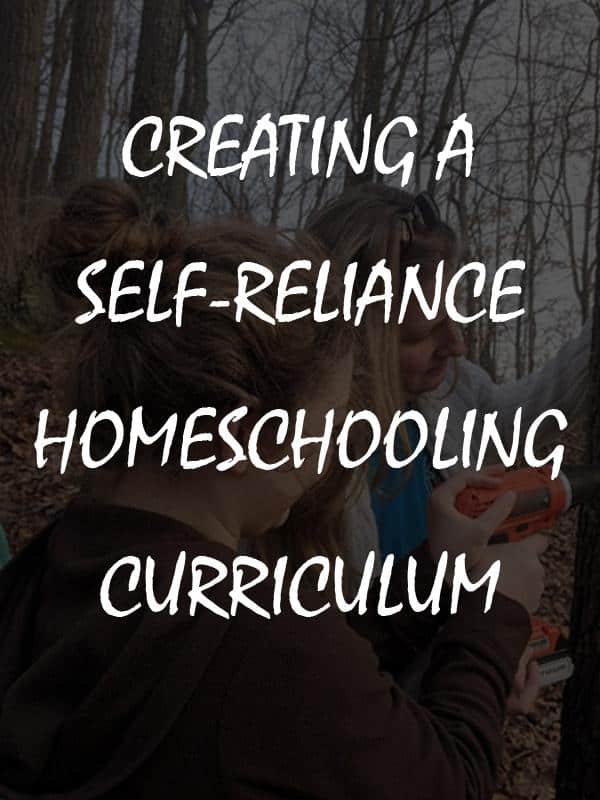

Tara Dodrill is a homesteading and survival journalist and author. She lives on a small ranch with her family in Appalachia. She has been both a host and frequent guest on preparedness radio shows. In addition to the publication of her first book, ‘Power Grid Down: How to Prepare, Survive, and Thrive after the Lights go Out’, Dodrill also travels to offer prepping tips and hands-on training and survival camps and expos.

This is a great article. THanks.
Red C,
Thank you. What are children are you homeschooling now or expecting to after the SHTF? Happy to help offer some more tips or guidance to help you get ready to educate the kiddos during a disaster – and most likely after for quite a while.
Thanks for the article. This is how I run my homeschool. There is more to school than just academics!
Thank you, Wendi, and good for you and you are exactly right!